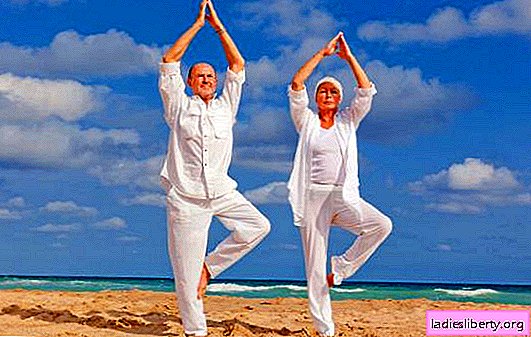
A German large-scale study found that yoga postures, breathing, and meditation lower blood pressure. The goal of the new experimental intervention was to study the pressure-lowering effects of yoga in patients with arterial hypertension.
How dangerous is hypertension and how does yoga not affect it?
Arterial hypertension is a serious public health problem that reduces life expectancy. Every year, 9.4 million people worldwide die as a result of high blood pressure.
The World Health Organization has identified arterial hypertension as the leading cause of premature death in developed countries.
International medical recommendations recommend that patients with hypertension change their lifestyle. Yoga is one of such interventions that affect lifestyle. In Western societies, it is usually associated with special postures, breathing, or meditation.
¾ Practitioners in Russia claim to do yoga because of health problems. However, there is no research on the effect of yoga on hypertension.
A significant decrease in systolic and diastolic blood pressure using yoga has been identified in several studies. However, these effects were demonstrated in only 5 of 12 experimental interventions.
In studies involving both prehypertensive and hypertensive patients, the effects were negligible. Yoga was only effective in works that included breathing or meditation, but not yoga poses. In experiments related to the practice of yoga posture, no significant effects were noted.
What results were obtained in the study?
Systolic and diastolic 24-hour blood pressure at week 12 was significantly reduced. Systolic and diastolic blood pressure at week 28 were assessed as secondary outcome measures.
The first measurement at 1 week was carried out within 1 week before the start of the intervention. The second measurement was performed at 12 weeks. For all 3 measurements, blood pressure measurement began at the same time of day. Incorrect measurements have been automatically deleted.
In a controlled study, patients decreased blood pressure by 20% from baseline. An increase in parasympathetic and a concomitant decrease in sympathetic activity have been discussed as important mechanisms for the benefits of yoga.
Slow breathing and meditation techniques can briefly excite the parasympathetic nervous system.
Long-term positive effects in patients with hypertension are achieved only with the help of posture, breathing and meditation. Yoga poses can be seen as a form of isometric training, while dynamic procedures are aerobic training. Both isometric and aerobic exercises lower blood pressure.
The main reason for the long-term differences in the groups is also associated with unequal adherence to therapy. Only yoga without posture had a direct effect on systolic (but not diastolic) 24-hour blood pressure.
However, in order to maintain these effects after the end of the intervention, patients had to practice yoga poses.
Since yoga was effective, it can be recommended as a measure to reduce pressure. Side effects from yoga practice are minor and do not affect overall health.
How safe are yogic practices?
No serious side effects were detected during the study. In the intervention group, 9 patients (36.0%) had a total of 15 minor side effects.
In the group that did not practice posture, 4 patients (16.0%) had 5 minor side effects. The control group had 4 minor adverse events (8.0%). Patients mainly experienced back pain, dizziness, headache, and imbalance.
Only one person had high blood pressure due to a panic attack. Other participants did not experience clinically significant side effects. Therefore, in the new guidelines, the inclusion of yoga in the mandatory element of treatment of the initial stage of hypertension is expected.











